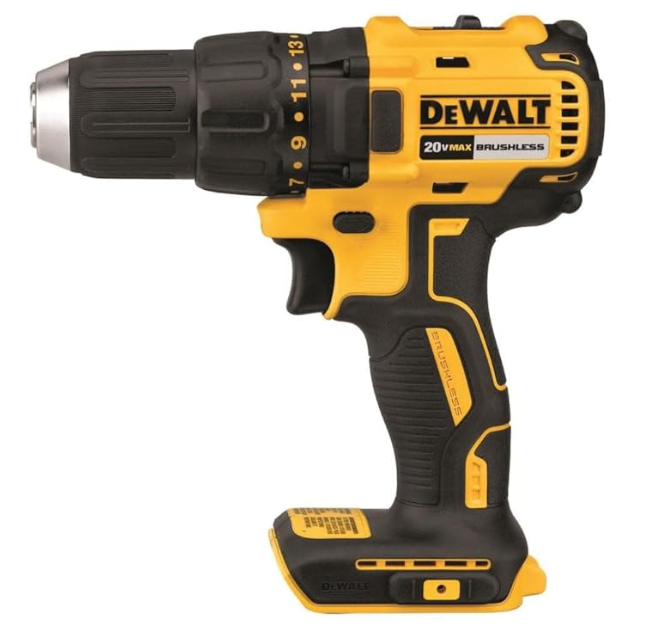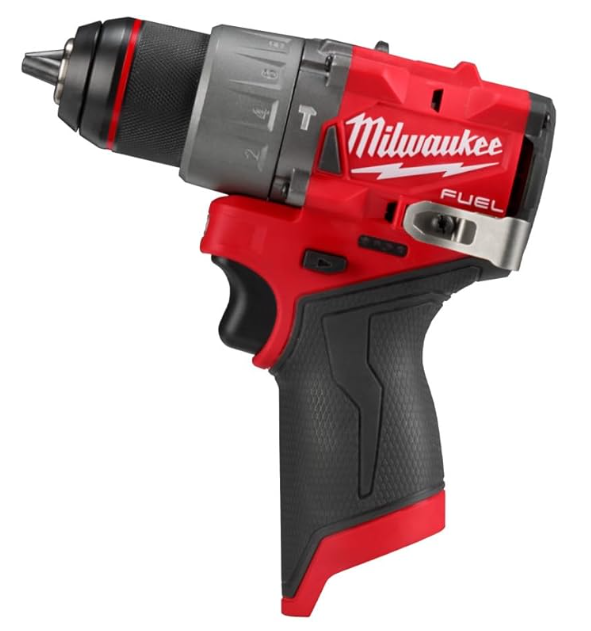Milwaukee Drill vs Dewalt Drill: The Ultimate Showdown
DEWALT GENERALMILWAUKEE GENERAL
11/7/20255 min read


VS


Introduction to Milwaukee and Dewalt Drills
Milwaukee and Dewalt are two of the most prominent brands in the power tool industry, both recognized for their commitment to quality, performance, and innovation. Milwaukee Electric Tool Corporation, founded in 1924, has built a robust reputation, particularly within the professional contractor segment. The brand is synonymous with durability and efficiency, often hailed for its advanced solutions designed to meet the demands of heavy usage on job sites. Milwaukee's focus on product improvement has led to the introduction of various revolutionary technologies, such as the M18 and M12 battery systems, which offer exceptional battery life and power.
Dewalt, established in 1924 as well, has carved its niche within the power tools market by providing reliable and effective products tailored for both professionals and DIY enthusiasts. Renowned for their robust drills and versatile tool kits, Dewalt tools are celebrated for their build quality and ease of use. The brand has consistently prioritized innovation, with features like the FlexVolt technology, which allows tools to automatically adjust power based on the battery used, catering to varying demands and providing users versatility.
Both brands offer a wide range of drill options, from compact models suited for tight spaces to heavy-duty versions ideal for demanding applications. Users tend to regard Milwaukee drills as exceptionally rugged, making them a favored choice among many tradespeople. Conversely, Dewalt drills are often praised for their balance between power and precision, making them popular for diverse tasks, including woodworking, metalworking, and general construction. Overall, Milwaukee and Dewalt continue to be recognized leaders in the marketplace, maintaining a strong consumer base and consistently innovating to enhance user experience and satisfaction.
Performance Comparison: Power, Speed, and Battery Life
When assessing the performance of Milwaukee and Dewalt drills, several critical specifications come into play, including torque, RPM (revolutions per minute), and overall power output. These metrics not only reflect the drills' capabilities but also determine their suitability for various tasks. Milwaukee drills are often recognized for their superior torque ratings, providing users with increased power when drilling into tougher materials. This characteristic makes them ideal for heavy-duty applications, ensuring that users can work efficiently without sacrificing performance.
On the other hand, Dewalt drills tend to excel in RPM ratings, which translates to faster drilling speeds. This speed allows for quick completion of tasks, particularly when working with lighter materials or in applications where precision is not compromised. The RPM advantage of Dewalt tools can be appealing for those who prioritize speed and efficiency without needing substantial torque.
Battery technology also plays a vital role in determining the practicality of both brands. Milwaukee utilizes its REDLITHIUM battery technology, which is designed to offer extended runtime and improved durability. These batteries are engineered to resist wear and allow for faster charging times, making Milwaukee models convenient for extended use. Conversely, Dewalt drills feature FLEXVOLT batteries that automatically adjust voltage, providing versatility for different tools and maximizing power output as needed. The continuous power delivery in Dewalt tools supports sustained performance over longer periods.
Battery life for both brands generally meets the demands of most users, but specific models may vary. Milwaukee’s approach typically results in slightly longer usage times before needing a recharge, while Dewalt’s quick charge capability minimizes downtime. Ultimately, the choice between Milwaukee and Dewalt drills may depend on the specific requirements of the task at hand, prioritizing either torque and durability or speed and versatility.
Features and Ergonomics: Which Drill Feels Better to Use?
When evaluating the Milwaukee and Dewalt drills, it is essential to consider their features and ergonomics, as these aspects significantly influence user experience and effectiveness in various tasks. Both brands have established their reputation in the power tool market, yet they present unique characteristics that cater to different preferences and needs.
Starting with features, Milwaukee drills often come equipped with advanced clutch settings, allowing users to fine-tune torque and achieve precision in their work. Milwaukee's speed control is also notable, offering a variable speed trigger for smooth operation in different materials. Additionally, many Milwaukee models include built-in LED lights, enhancing visibility in low-light environments, which can be particularly beneficial when working in tight or dark spaces.
On the other hand, Dewalt drills are renowned for their robust build and reliable performance. They provide a broad range of clutch settings as well, ensuring versatility in handling different screws and materials. Dewalt's speed control features also enable users to adapt their drilling speed effectively. A common highlight of Dewalt drills is the ergonomic design, often characterized by a well-balanced weight distribution and a comfortable grip that can minimize user fatigue during prolonged use. Their integrated LED lights also serve to illuminate work areas, ensuring accuracy and safety.
When considering ergonomics, shape, weight, and grip come into play. Milwaukee drills tend to have a slightly more compact design, which may appeal to users who prefer a lighter tool for overhead or extended task usage. Conversely, Dewalt drills typically boast a more substantial feel, lending themselves to heavy-duty applications but potentially causing strain during extended use without breaks. It's crucial for users to choose a drill that aligns with their specific requirements while considering how each drill's design impacts comfort and usability.
In conclusion, both Milwaukee and Dewalt offer valuable features and ergonomic designs that can enhance user experience, emphasizing the importance of personal preference and the specific applications for which the drills are intended.
Price Analysis and Customer Reviews
When evaluating the Milwaukee Drill and Dewalt Drill, one of the crucial aspects to consider is the price range associated with each brand. Milwaukee drills typically fall within a moderate to high price bracket, reflecting their reputation for durability and advanced technology. On the other hand, Dewalt drills are often positioned similarly in terms of pricing but can occasionally offer lower-priced models that maintain a strong performance. For consumers, understanding what you receive for your investment is paramount.
In customer feedback, Milwaukee drills are frequently praised for their superior build quality and longevity, often appealing to professional users who rely on these tools for daily tasks. Many users appreciate the ergonomic design and innovative features, such as their longer battery life and rapid charging technologies, which enhance overall efficiency. Customers have commented positively about the performance of Milwaukee drills in heavy-duty applications, demonstrating their reliability in challenging environments.
Conversely, Dewalt drills also enjoy a strong following among consumers and professionals alike. Many users laud their affordability without compromising essential performance benchmarks. Dewalt tools are often recognized for their user-friendly interface and versatility, making them suitable for both novice and experienced users. However, some reviews indicate that, while Dewalt drills perform well, they may not always match the top-tier durability of Milwaukee models in extreme conditions.
Both brands have their strengths and weaknesses as highlighted by consumer reviews. Potential buyers should weigh their specific needs against the features and price points associated with each drill. In conclusion, understanding the price structures and customer satisfaction levels for both Milwaukee and Dewalt drills will empower consumers to make an informed choice that best suits their requirements.
